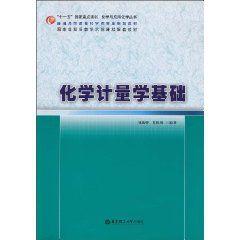內容簡介
化學計量學在化學量測中的採樣理論與實驗設計、化學數據處理、分析信號解析與分辨、化學分類決策與預報等方面,解決了大量傳統的化學研究方法難以解決的複雜問題,顯示了其強大的生命力,已受到化學尤其是分析化學工作者的極大關注。
圖書目錄
Chapter 1 Introduction and Necessary Fundamental Knowledge of Mathematics
1.1 Chemometrics: Definition and Its Brief History / 3
1.2 The Relationship between Analytical Chemistry and Chemometrics / 4
1.3 The Relationship between Chemometrics, Chemoinformatics and Bioinformatics / 7
1.4 Necessary Knowledge of Mathematics / 9
1.4.1 Vector and Its Calculation / 10
1.4.2 Matrix and Its Calculation / 19
Chapter 2 Chemical Experiment Design
2.1 Introduction / 39
2.2 Factorial Design and Its Rational Analysis / 41
2.2.1 Computation of Effects Using Sign Tables / 44
2.2.2 Normal Plot of Effects and Residuals / 45
2.3 Fractional Factorial Design / 47
2.4 Orthogonal Design and Orthogonal Array / 52
2.4.1 Definition of Orthogonal Design Table / 53
2.4.2 Orthogonal Arrays and Their Inter-effect Tables / 54
2.4.3 Linear Graphs of Orthogonal Array and Its Applications / 55
2.5 Uniform Experimental Design and Uniform Design Table / 55
2.5.1 Uniform Design Table and Its Construction / 56
2.5.2 Uniformity Criterion and Accessory Tables for Uniform Design / 59
2.5.3 Uniform Design for Pseudo-level / 60
2.5.4 An Example for Optimization of Electropherotic Separation Using Uniform Design / 61
2.6 D-Optimal Experiment Design / 65
2.7 Optimization Based on Simplex and Experiment Design / 68
2.7.1 Constructing an Initial Simplex to Start the Experiment Design / 69
2.7.2 Simplex Searching and Optimization / 70
Chapter 3 Processing of Analytic Signals
3.1 Smoothing Methods of Analytical Signals / 77
3.1.1 Moving-Window Average Smoothing Method / 77
3.1.2 Savitsky-Golay Filter / 77
3.2 Derivative Methods of Analytical Signals / 83
3.2.1 Simple Difference Method / 83
3.2.2 Moving-Window Polynomial Least-Squares Fitting Method / 84
3.3 Background Correction Method of Analytical Signals / 89
3.3.1 Penalized Least Squares Algorithm / 89
3.3.2 Adaptive Iteratively Reweighted Procedure / 90
3.3.3 Some Examples for Correcting the Baseline from Different Instruments / 92
3.4 Transformation Methods of Analytical Signals / 94
3.4.1 Physical Meaning of the Convolution Algorithm / 94
3.4.2 Multichannel Advantage in Spectroscopy and Hadamard Transformation / 96
3.4.3 Fourier Transformation / 99
Appendix 1.A Matlab Program for Smoothing the Analytical Signals / 108
Appendix 2 :A Matlab Program for Demonstration of FT Applied to Smoothing / 112
Chapter 4 Multivariate Calibration and Multivariate Resolution
4.1 Multivariate Calibration Methods for White Analytical Systems / 116
4.1.1 Direct Calibration Methods / 116
4.1.2 Indirect Calibration Methods / 121
4.2 Multivariate Calibration Methods for Grey Analytical Systems / 126
4.2.1 Vectoral Calibration Methods / 127
4.2.2 Matrix Calibration Methods / 127
4.3 Multivariate Resolution Methods for Black Analytical Systems / 129
4.3.1 Self-modeling Curve Resolution Method / 131
4.3.2 Iterative Target Transformation Factor Analysis / 134
4.3.3 Evolving Factor Analysis and Related Methods / 137
4.3.4 Window Factor Analysis / 141
4.3.5 Heuristic Evolving Latent Projections / 145
4.3.6 Subwindow Factor Analysis / 152
4.4 Multivariate Calibration Methods for Generalized Grey Analytical Systems / 154
4.4.1 Principal Component Regression (PCR) / 156
4.4.2 Partial Least Squares (PLS) / 157
4.4.3 Leave-one-out Cross-validation / 159
Chapter 5 Pattern Recognition and Pattern Analysis for Chemical Analytical Data
5.1 Introduction / 169
5.1.1 Chemical Pattern Space / 169
5.1.2 Distance in Pattern Space and Measures of Similarity / 171
5.1.3 Feature Extraction Methods / 173
5.1.4 Pretreatment Methods for Pattern Recognition / 173
5.2 Supervised Pattern Recognition Methods: Discriminant Analysis Methods / 174
5.2.1 Discrimination Method Based on Euclidean Distance / 175
5.2.2 Discrimination Method Based on Mahaianobis Distance / 175
5.2.3 Linear Learning Machine / 176
5.2.4 k-Nearest Neighbors Discrimination Method / 177
5.3 Unsupervised Pattern Recognition Methods: Clustering Analysis Methods / 179
5.3.1 Minimum Spanning Tree Method / 179
5.3.2 k-means Clustering Method / 181
5.4 Visual Dimensional Reduction Based on Latent Projections / 183
5.4.1 Projection Discrimination Method Based on Principal Component Analysis / 183
5.4.2 SMICA Method Based on Principal Component Analysis / 186
5.4.3 Classification Method Based on Partial Least Squares / 193

